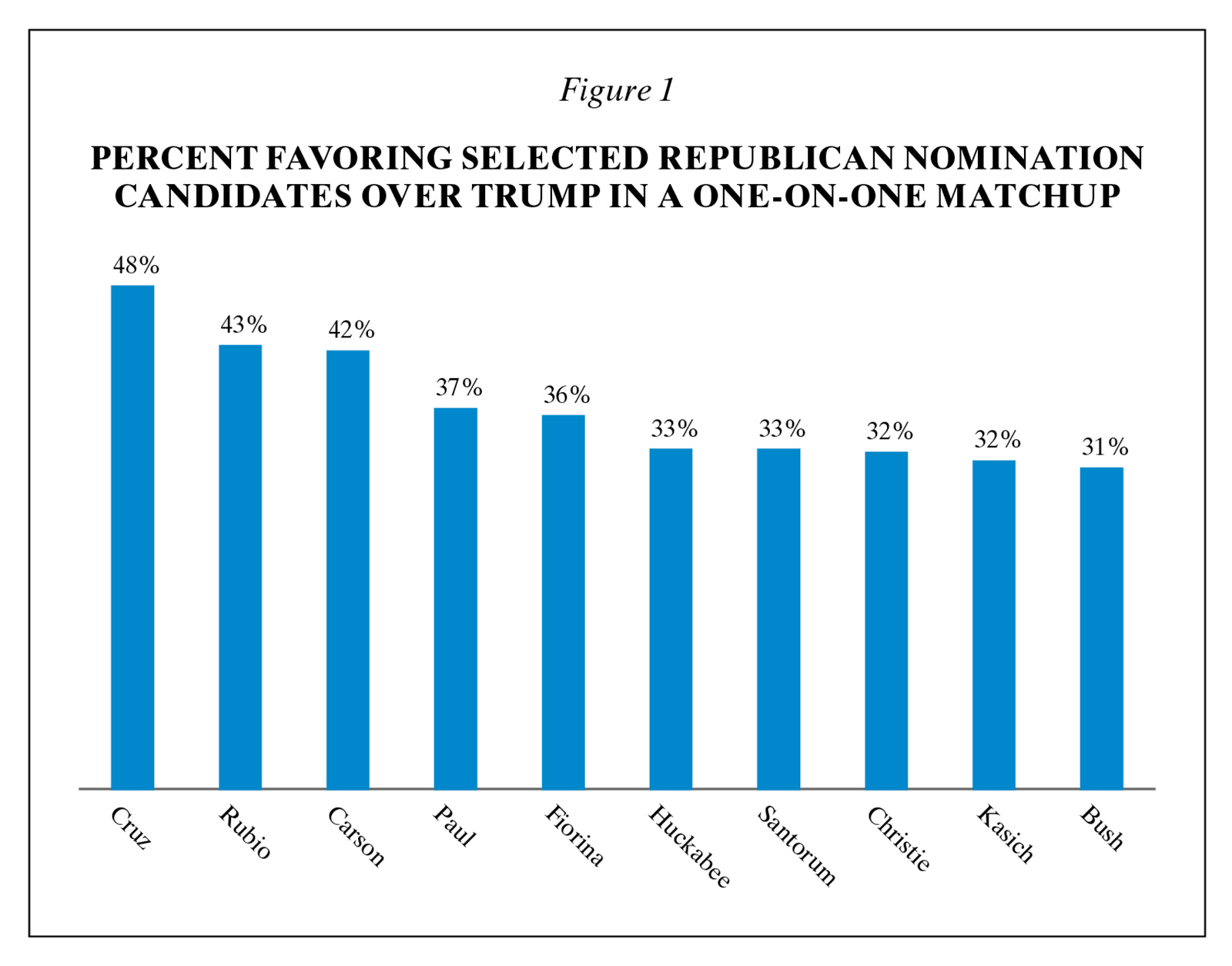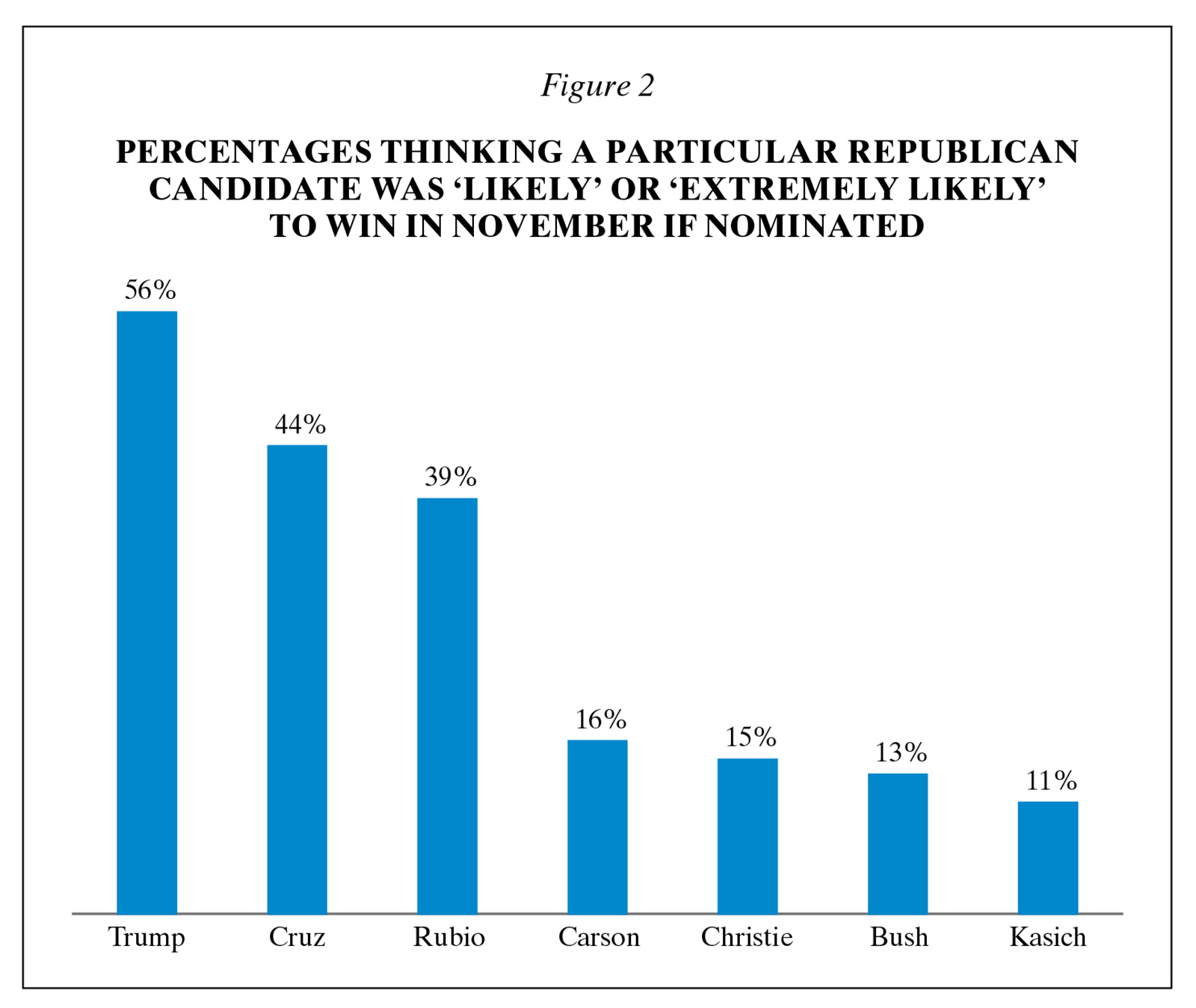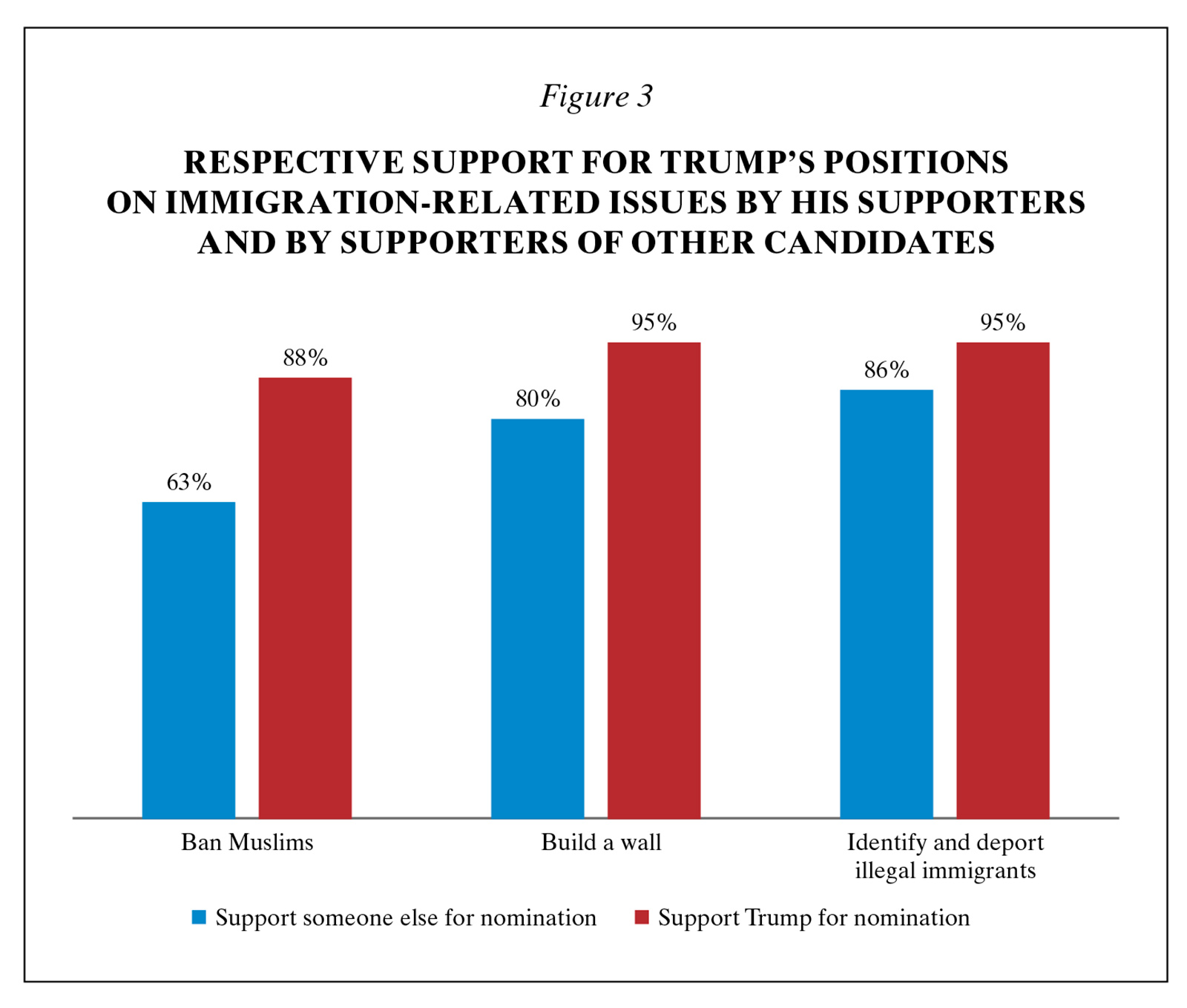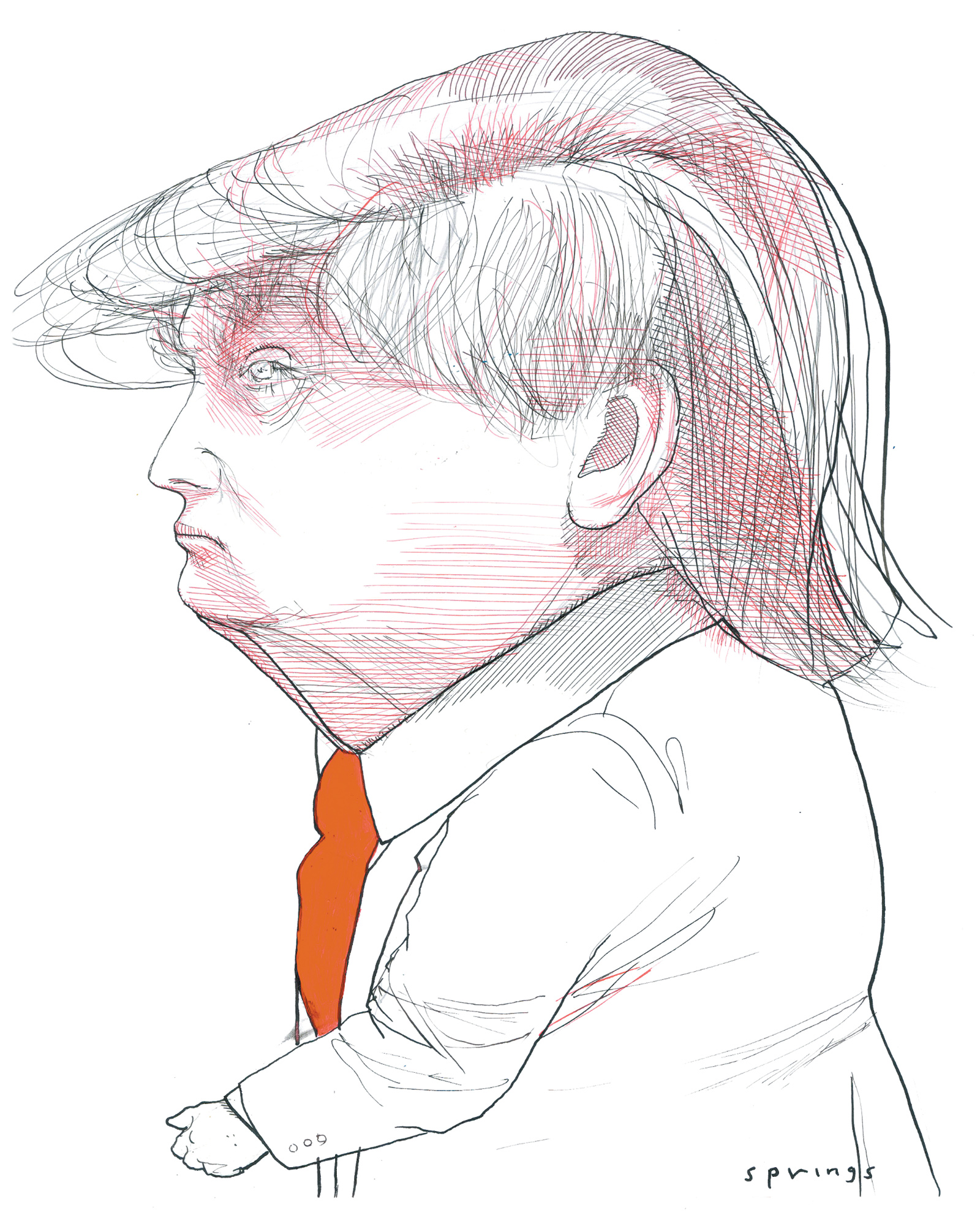The 2016 Republican nomination contest is over. Donald Trump stands alone. This has surprised pundits, political scientists, and journalists alike. But why is it surprising that a candidate who led the race from July 2015 is going to be the Republican nominee?
Talk of a Trump “ceiling” was rampant from the time that he entered the GOP contest. His ceiling was 25 percent; later it was 30 percent; and then later it was 40 percent. Obviously, for many political observers, it was inevitable that the anti-Trump vote would coalesce around one of his opponents. However, as we saw with the abortive John Kasich–Ted Cruz alliance prior to the Indiana primary on May 3, it was impossible for even two of Trump’s opponents to coordinate their attacks on the front-runner. But even with a more successful effort at coordination much earlier during the campaign, it is very unlikely that Trump could have been stopped.
To explain Trump’s inevitability we need survey data from the early primary period with matchups of all candidates against Trump one-on-one. A survey asking only about first choices is not useful, since in a fourteen-candidate race no one is likely to achieve majority status. Fortunately, we have data to address this question.
In order to understand the Trump phenomenon, we commissioned YouGov to carry out a Web-based survey of a national sample of 1,000 Republicans and independents. Of this initial sample, 688 respondents identified themselves as certain to vote in a Republican primary. The surveys were carried out during the two weeks surrounding the Iowa caucuses in early February but results from those interviewed before and after the caucuses were almost identical.
We asked our respondents to rank the eleven major candidates in the GOP race at the time of the Iowa caucuses: Jeb Bush, Ben Carson, Chris Christie, Ted Cruz, Carly Fiorina, Mike Huckabee, John Kasich, Rand Paul, Marco Rubio, Rick Santorum, and Trump. Remarkably almost everyone ranked all eleven candidates, so our data allow us to address the potential for Trump opponent coordination.
At the time of our survey Trump had already broken through the 25 percent, 30 percent, and 35 percent ceilings that had supposedly limited his support. Slightly over a third (36.5 percent) of likely Republican voters rated him as their top choice, followed by Cruz and Rubio. Nonetheless he was still far short of the majority support that pundits thought he would need when the race came down to a two-person contest.
Based on respondents’ rankings of the eleven candidates, we were able to determine whether any other candidate would have been able to defeat Trump in a one-on-one contest. The answer was “no.” As the results in Figure 1 show, no candidate finished ahead of Trump, and only one, Cruz, even came within 10 percentage points of Trump.

Even though almost two thirds of Republican voters supported a candidate other than Trump at the time of our survey, a substantial number of those supporting other candidates shifted to Trump when their favorite candidate was eliminated from the choices available. Only Rubio, Carson, and Cruz attracted even 60 percent of other candidates’ supporters in the survey when the race narrowed to a two-person contest. And only Cruz received two thirds or more of other candidates’ supporters.
Cruz, with 48 percent in a one-on-one contest, came much closer than any other candidate to defeating Trump. And there was still plenty of time for GOP voters to learn more about the other non-Trump candidates and to change their minds. Perhaps other factors such as electability could have caused Trump supporters to switch to another candidate. Indeed, many Republican officeholders and party leaders tried to make the argument that Trump was simply not electable and that a Trump candidacy could endanger GOP candidates for the Senate and House.
However, an examination of the results of our question asking Republican voters about the electability of various GOP candidates shows that the electability argument was unlikely to persuade Republican primary voters. In fact the data in Figure 2 show that Trump dominated other candidates on electability. Notwithstanding the concerns of Republican elites, Trump was the only candidate a majority of GOP primary voters saw as “very likely” or “likely” to win the general election. Cruz and Rubio were the only other candidates that even a third of Republicans viewed as likely winners in November. So our data offer little reason to think that Republicans interested in winning could have been persuaded to defect from Trump.

Not surprisingly, supporters of each candidate tended to think that their preferred candidate was the most electable. However, Trump supporters consistently viewed him as more electable than supporters of other candidates. In fact, in our survey, more GOP voters viewed Trump as the most electable candidate than supported him. This finding suggests that Trump’s potential for growth in support based on electability was greater than that of any other candidate.
Advertisement
One of the main reasons many political commentators were surprised by Donald Trump’s success in the primaries was his willingness to take extreme positions and use unusually harsh rhetoric in talking about immigration and related issues. Indeed, Trump’s comments about Mexican immigrants and Muslims have been at the center of his campaign. And his pronouncements on these topics have greatly concerned many Republican leaders and elected officials who feared they would harm the party’s image and damage its electoral prospects. But how did his positions and comments play with Republican primary voters?
The clear answer is that they reflected the views of likely Republican voters extremely well. We asked a series of questions about Trump’s controversial proposals (banning Muslims from entering the US, building a wall on the Mexican border, and identifying and deporting illegal immigrants). On all three issues overwhelming majorities of likely Republican voters supported his positions: almost three quarters (73 percent) favored banning Muslims from entering the US, 90 percent favored identifying and deporting illegal immigrants as quickly as possible, and 85 percent favored building a wall on the Mexican border.
Trump supporters were more in favor of these proposals than supporters of other candidates, but as Figure 3 shows, large majorities of likely Republican voters who did not support Trump for the nomination did support Trump’s positions on his three central issues. Almost two thirds favored his proposal to ban Muslims from entering the US and four fifths favored building the wall and identifying and deporting illegal immigrants. In fact 60 percent of non-Trump supporters took his position on all three of his distinctive issues.
As with electability, Trump’s positions on immigration, rather than limiting his appeal, actually gave him the potential to expand his electoral coalition.

Trump’s emergence on the political scene in the summer of 2015 was unprecedented. That someone with no office-holding experience and little previous involvement in the Republican Party could emerge as the GOP nominee seemed implausible. Media commentators, pundits, and academics continued to hold this position deep into the fall and winter, even at a time when national and state polls showed Trump to be a formidable candidate if not the inevitable nominee.
As our data here show, Donald Trump’s primary victories on his way to the nomination were not simply a result of a crowded field. Among our national sample of likely Republican primary voters, Trump was favored over every other Republican candidate in one-on-one matchups. Moreover, he was viewed as the most electable candidate by a majority of Republican primary voters, and on his distinctive issues involving immigration even those favoring other candidates overwhelmingly agreed with him.
Trump and his supporters were not in line with the opinions of a majority of Republican voters. As we showed in our earlier essay for Larry Sabato’s Crystal Ball,* Trump supporters were quite distinct from other Republicans on issues like raising the minimum wage and raising taxes on upper-income households. Almost two thirds of Trump supporters favored raising taxes on incomes over $250,000 compared with only 41 percent of other Republicans, and while almost half of his supporters (48 percent) favored raising the minimum wage, that was true of less than a third of those supporting other candidates.
It is not happenstance that these are two issues on which Trump has said he may change his positions in order to “clarify” them. Whether he can maintain these more populist positions on economic issues without turning off more conservative Republican voters remains a central question for his campaign.
But regardless of how successful he is in unifying the Republican Party behind his candidacy in the future, Donald Trump was already very close to being the inevitable nominee in January 2016.




